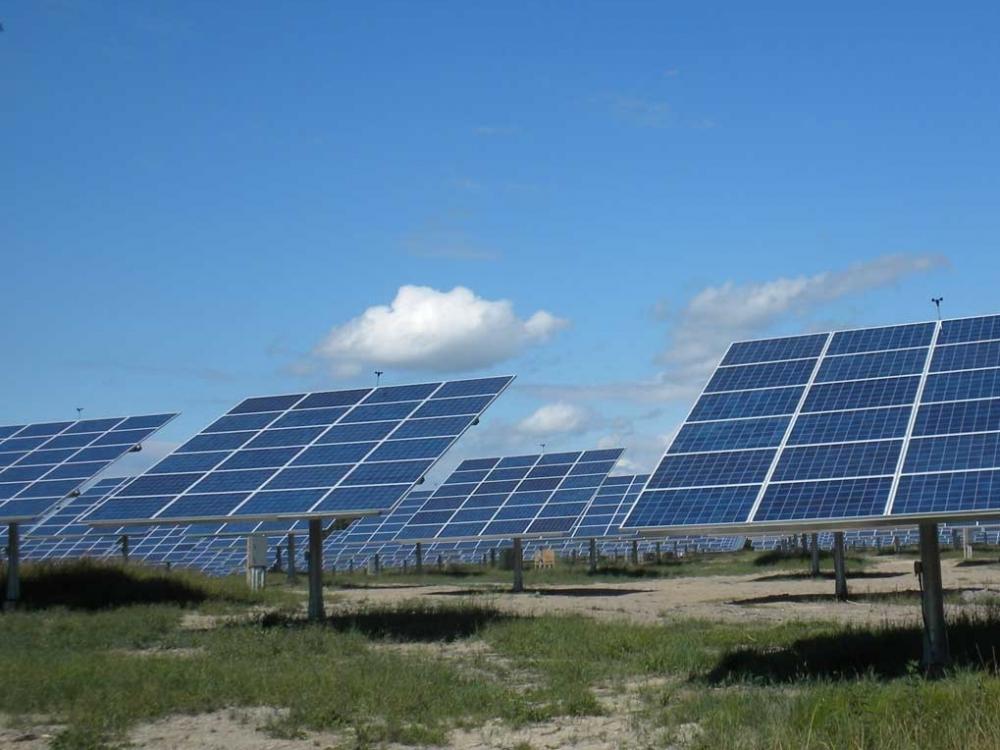
Caption
South Georgia's giant solar farms are causing rivers and stream pollution, according to the state Environmental Protection Division.

South Georgia's giant solar farms are causing rivers and stream pollution, according to the state Environmental Protection Division.
ATLANTA – Runoff from a growing number of giant solar farms polluting rivers and streams in rural South Georgia is becoming a major concern, an official with the state Environmental Protection Division (EPD) said Monday.
Huge solar farms of up to 1,000 acres are being built on the region’s sandy soil, which is particularly vulnerable to erosion of sediment caused by runoff from solar panels, James Cooley, the EPD’s director of division operations, told members of the Georgia House Rural Development Council meeting in Americus.
Local governments, which play a major role in the permitting of construction sites, typically deal with small sites such as Dollar Generals and aren’t used to such large projects, Cooley said.
“The ball gets dropped somewhere in the process,” he said.
House lawmakers and other officials attending the meeting on the campus of Southwest Georgia State University were surprised and dismayed by what they heard from Cooley.
“This is eye-opening to say the least,” said state Rep. John Corbett, R-Lake Park, a member of the council, formed by House Speaker David Ralston five years ago to look for ways to improve rural Georgia’s economy.
“[What] we don’t want to be known for in Georgia is a clean energy state that has caused our rivers to become dirty,” added Jason Shaw, a member of the state Public Service Commission (PSC), Georgia’s energy regulating agency.
At the same time, council members heard other presentations Monday on the value of solar farms both to Georgia landowners and rural communities.
Landowners and local municipalities in Georgia are receiving about $2.9 billion a year in income by leasing land being used for solar farms by Georgia Power alone, said Ryan Sanders, executive director of the Georgia Large-Scale Solar Association.
“This is an opportunity for people … who are looking for a long-term revenue stream that will help them stay on the land,” added Jeff Clark, president and CEO of the Advanced Power Alliance, a Texas-based renewable energy trade association. “This is [also] a way to bring new revenue into a community without putting additional strain on the infrastructure.”
While large solar farms tend to stand out because they’re often located near busy highways, they take up only a tiny percentage of Georgia’s land mass, PSC Chairwoman Tricia Pridemore said.
Currently, there are about 35,000 acres of solar farms spread over 54 square miles, just 0.9% of the land in Georgia, she said.
Clark said large-scale solar power developers typically include “decommissioning” requirements in their contracts with utilities that include commitments to remediate solar farm sites after their useful lives and recycle the metal from used solar panels.
“The renewable industry relies on a long-term relationship to communities,” he said. “We want a good relationship. We want communities to look at us positively.”
Shaw said counties where utilities are looking to locate solar farms should adopt model ordinances governing permitting requirements to make sure applicants have plans for handling runoff.
This story is available through a news partnership with Capitol Beat News Service, a project of the Georgia Press Educational Foundation.